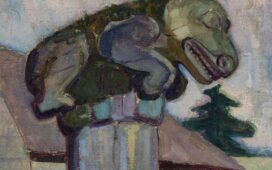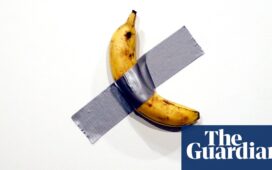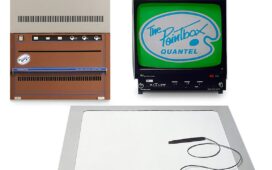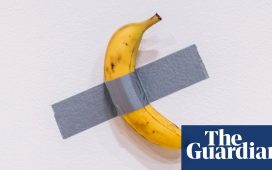Paulina Brandberg, the Swedish minister for gender equality and work life, has a phobia of bananas so severe, her aides check rooms for the fruit before she’s due to enter them. Like other sufferers of this most unlikely of conditions, she is triggered by the merest traces of banana: a skin mouldering in a far-off wastepaper basket; a lingering smell; the sense that until recently something bendy and yellow lurked next to the perfectly innocent apples and oranges in the bowl on that coffee table.
We can only hope, then, that the minister was – trigger warning – nowhere near the big auction house news of last week, in which a banana sold for $5.2m (£4.1m) at Sotheby’s New York. This wasn’t, of course, any old banana. It was a banana called Comedian, the work of Maurizio Cattelan, an Italian visual artist. Cattelan describes it as a “sincere commentary on what we value”, which must have sounded a touch desperate until the moment when everyone started comparing its auction price with the cost of a banana down at their local Tesco.
But he’s not the only one chancing it. Justin Sun, the crypto entrepreneur who snapped it up for four times its estimate, calls is a “cultural phenomenon”, seemingly unbothered by the fact that its central component will last only about as long as the lettuce that was used to mock the short-lived premiership of Liz Truss.
Comedian comprises the banana and a strip of duct tape with which it is attached to a wall. For his millions, Sun will receive the banana, a roll of duct tape and instructions on how precisely to install the work, including information on how to replace the fruit (the mind boggles, given the ubiquity of bananas). The really important item, however, is the certificate of authenticity that will accompany these items, for herein lies Comedian’s – fingers crossed, eh? – ongoing value. We’re all free to tape fruit to our walls should the fancy take us, but only someone with the right paperwork is allowed to claim such an installation emanated from the audacious mind of Cattelan. It isn’t known where Sun will keep his certificate. Will it be framed or will it be locked away somewhere? Either way, news of its imminent dispatch was followed by widespread amazement.
after newsletter promotion
We’ve been here before, of course. Marcel Duchamp’s Fountain was the original art disrupter, though in his day – the artist’s porcelain urinal, signed R Mutt, was made in 1917 – the world was infinitely more stodgy than now; there was more to disrupt. One thinks, too, of Equivalent VIII, the neat pile of bricks assembled by the American minimalist Carl Andre in 1966 and purchased by the Tate in 1972 for $6,000 (then £2,297). It still maddens visitors and critics alike.
But something about Comedian feels different. Sun is a crypto-baron, a tycoon of virtual money – and he has bought a piece of art that, if not virtual itself, is certainly reality-adjacent: now you see it, now you don’t (when it was first shown in Miami, a “hungry” performance artist called David Datuna ate it).
There is a certain, rather horrible decadence here. Cattelan’s message about value, the stuff of a quickly cobbled together student essay, was hardly sophisticated to begin with. But now Sun has shelled out millions for it, the concept darkens grimly, however great the ironies involved. If Cattelan feels recent events have turned him into a prophet, he probably shouldn’t be too proud of the fact. Here is profligacy, dissipation and joylessness, however much we poke fun.
Art should be better than this and, when it isn’t, its price should be bargain basement: about the same as – yes – a banana.








